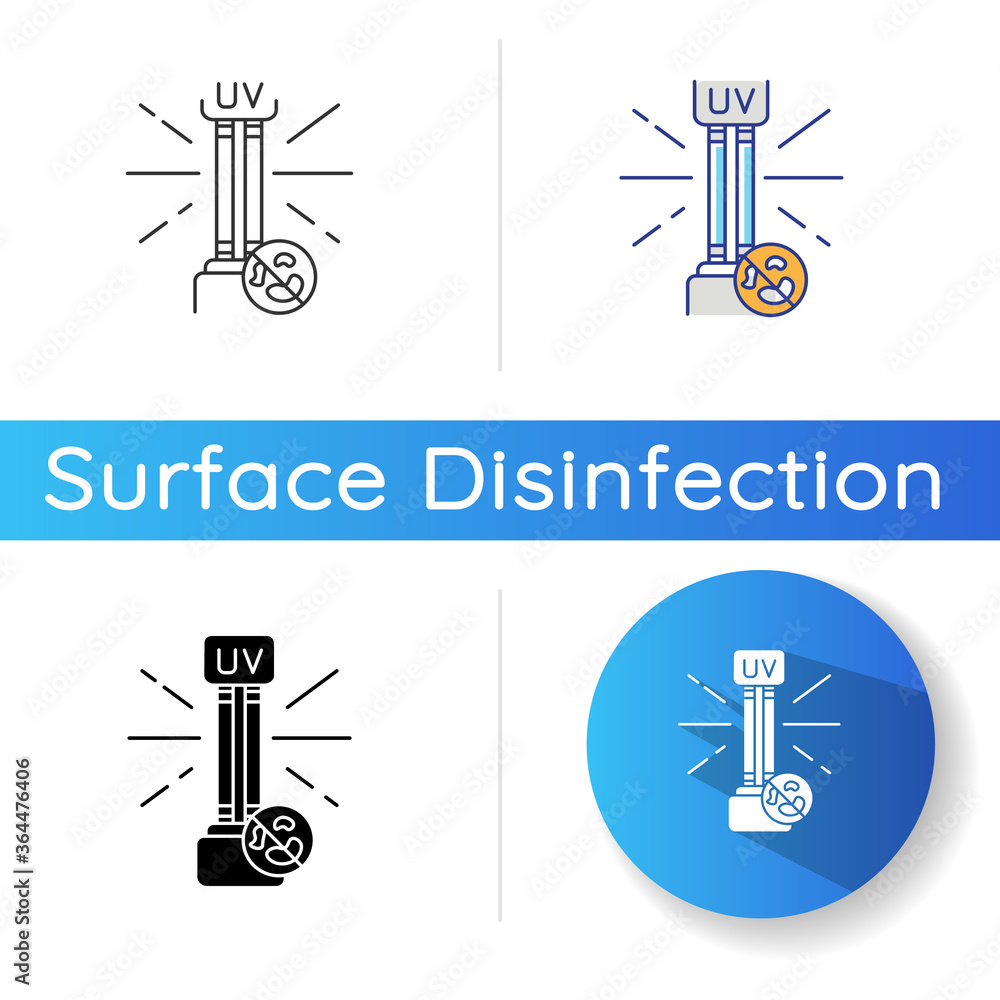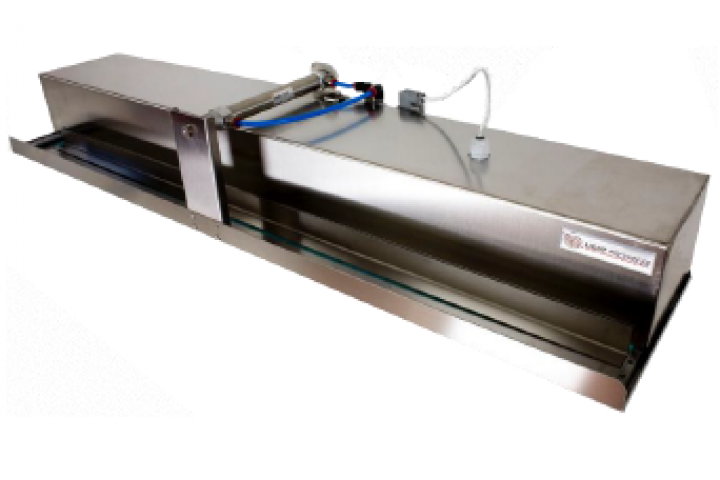Far-UVC UV Sanitizers: Revolutionizing Cleanliness Criteria for a Safer Atmosphere
Far UVC Light: A Game-Changer in the Fight Against Airborne Pathogens
In the ever-evolving fight against airborne virus, the appearance of far UVC light has actually stimulated significant rate of interest and possibility. This cutting-edge modern technology, taking advantage of a specific variety of ultraviolet light, holds the promise of changing just how we battle the spread of hazardous microorganisms in different settings. Its potential applications and special homes have garnered interest from researchers, researchers, and public health and wellness experts alike. However what exactly is far UVC light, and exactly how does it function? In this conversation, we will explore the scientific research behind this game-changing technology, explore its benefits, and examine its future implications in the recurring battle versus airborne pathogens.
The Scientific Research Behind Far UVC Light
The clinical principles underlying making use of Much UVC light as a potential option for combating air-borne virus are both encouraging and detailed. Far UVC light refers to a certain series of ultraviolet (UV) light wavelengths, normally between 207 and 222 nanometers, which have been discovered to properly eliminate or inactivate bacteria such as microorganisms and viruses. Unlike traditional UVC light, which has a much shorter wavelength and is known for its germicidal buildings yet can also damage human skin and eyes, Far UVC light has actually been revealed to be risk-free for human direct exposure.
The vital mechanism behind the effectiveness of Far UVC light depend on its ability to pass through and destroy the hereditary product of bacteria, including their DNA and RNA. When revealed to Far UVC light, the genetic product undertakes a procedure called photodimerization, where surrounding bases in the DNA or RNA particle bind together, protecting against duplication and making the microorganism unable to replicate or cause infection.

Exactly How Far UVC Light Functions
Far UVC light runs by using specific ultraviolet wavelengths to properly reduce the effects of microorganisms and stop their duplication, making it an appealing service for combating airborne microorganisms. Unlike conventional UVC light, which is harmful to human skin and eyes, much UVC light has much shorter wavelengths, normally in the variety of 207 to 222 nanometers (nm), that do not pass through the outer layer of the skin or the tear layer of the eye. This makes it secure for continuous human direct exposure, while still being dangerous to germs and viruses.
The efficiency of much UVC light lies in its capability to ruin the dna and pass through and RNA of bacteria. When revealed to far UVC light, the genetic product of these virus is damaged, rendering them not able to reproduce and infect cells. Furthermore, research studies have actually shown that far UVC light can properly inactivate airborne infections, such as flu, measles, and coronaviruses, consisting of SARS-CoV-2, the virus accountable for COVID-19.
In addition, much UVC light is also capable of decontaminating surfaces and things in an encased area. By mounting much UVC lights or utilizing portable far UVC light devices, it is possible to continually decontaminate the air and surface areas, lowering the risk of airborne transmission of microorganisms.
Advantages of Far UVC Light
Making use of far UVC light deals a variety of significant benefits in combating airborne pathogens and making certain a much safer environment for continual human exposure. One of the key advantages of far UVC light is its capability to successfully neutralize numerous kinds of harmful germs, viruses, and fungis without triggering injury to humans. Unlike standard UV light, which can be harmful to human skin and eyes, much UVC light has a shorter wavelength that enables it to target and damage microorganisms while posing minimal threat to human health and wellness.

Moreover, much UVC light is much safer for the atmosphere contrasted to standard sanitation methods. Chemical disinfectants typically have hazardous components that can have adverse influences on the environment. Far UVC light, on the other hand, does not produce any type of harmful byproducts or deposits, making it a more green and lasting remedy.
Applications of Far UVC Light
Much UVC light has actually shown to be effective in getting rid of airborne virus such as fungi, microorganisms, and viruses. Unlike traditional UV light, much UVC light is safe for human direct exposure, making it suitable for constant usage in public spaces such as offices, institutions, and hospitals.
An additional application of much UVC light remains in the healthcare market. It can be made use of to sanitize hospital areas, operating movie theaters, and medical equipment, minimizing the threat of healthcare-associated infections. Additionally, far UVC light can be integrated right into cooling and heating systems to purify the air circulating in buildings, supplying an included layer of defense versus airborne pathogens.
Additionally, far UVC light can be used in the food market to stop foodborne health problems. It can continue reading this be utilized to sanitize food handling centers, killing microorganisms and various other microorganisms that might contaminate foodstuff.
Future Ramifications of Far UVC Light
The prospective future applications of much UVC light are vast and hold promise for various industries and sectors. Among the vital locations where much UVC light could have a significant effect is in healthcare settings. Clinics and hospitals can make use of much UVC light to sanitize client rooms, running cinemas, and waiting areas, minimizing the danger of healthcare-associated infections - far-uvc. This might potentially result in enhanced client end results and reduced health care costs.
Furthermore, the usage of far UVC light in public rooms such as flight terminals, train terminals, and purchasing malls might help manage the spread of air-borne microorganisms. By continuously sanitizing these locations, the risk of transmission can be considerably lowered, offering a more secure atmosphere for people.
Another potential application of far UVC light remains in the food industry. Much UVC light could be made use of to disinfect cooking surface areas, packaging materials, and storage space locations. This could assist prevent the contamination of food and decrease the incident of foodborne diseases.
Additionally, far UVC light can be utilized in HVAC systems to sanitize the air flowing in buildings. This can be specifically beneficial in congested areas such as theaters, institutions, and workplaces, where the risk of air-borne transmission is visit the website higher.
Verdict
Finally, far UVC light has arised as a game-changer in the battle versus airborne microorganisms. Its one-of-a-kind residential properties and capacity to securely eliminate bacteria and viruses make it an appealing remedy for numerous applications. From public rooms to medical care setups, much UVC light deals countless advantages in lowering the transmission of diseases. With further research and growth, its prevalent execution can have substantial effects for the future of infection control.
Much UVC light refers to a details array of ultraviolet (UV) light wavelengths, typically in between 207 and 222 nanometers, which have actually been discovered to efficiently kill or suspend microbes such as infections and microorganisms. far-uvc. Unlike conventional UVC light, which has a shorter wavelength and is recognized for its germicidal buildings yet can additionally harm human skin and eyes, Far UVC light has been revealed to be secure for human direct exposure
Unlike traditional UVC light, which is hazardous to human skin and my latest blog post eyes, far UVC light has much shorter wavelengths, commonly in the variety of 207 to 222 nanometers (nm), that do not penetrate the external layer of the skin or the tear layer of the eye. Unlike traditional UV light, which can be harmful to human skin and eyes, much UVC light has a shorter wavelength that allows it to target and destroy microorganisms while positioning marginal danger to human health.
Unlike standard UV light, far UVC light is secure for human exposure, making it suitable for continual use in public rooms such as health centers, institutions, and workplaces.